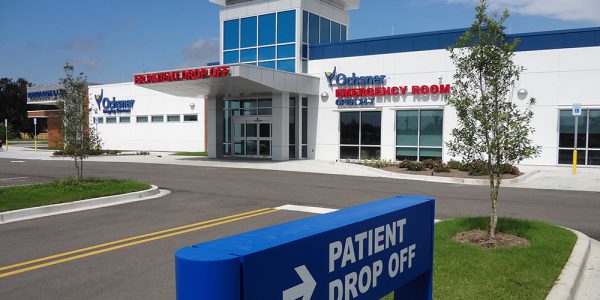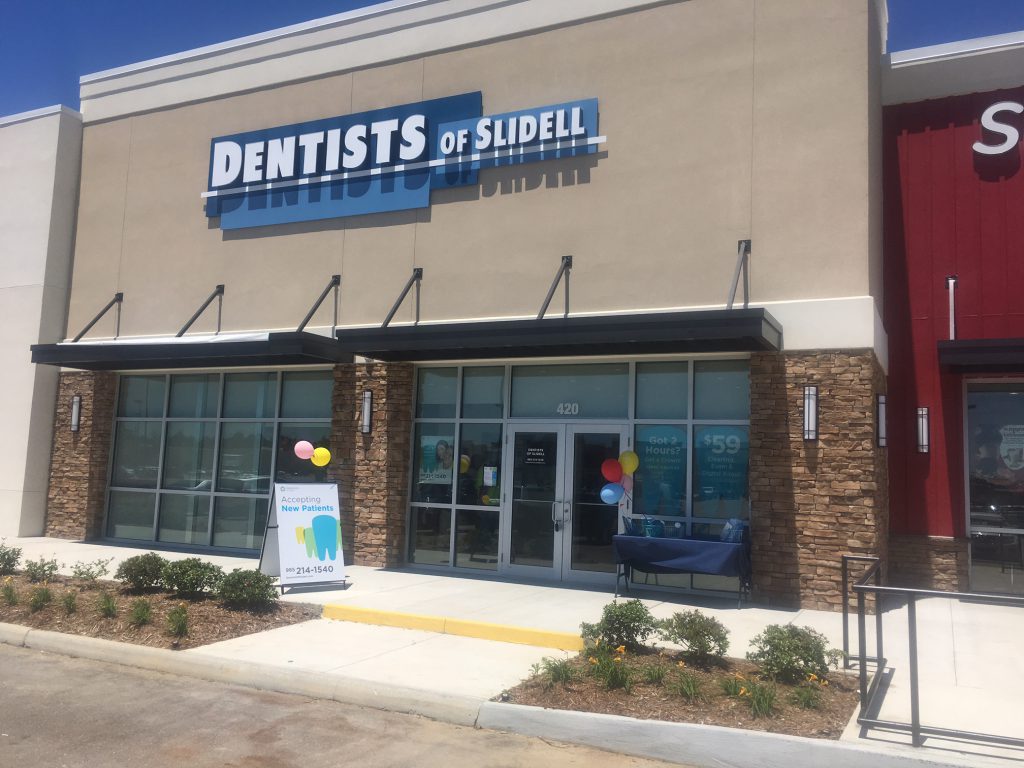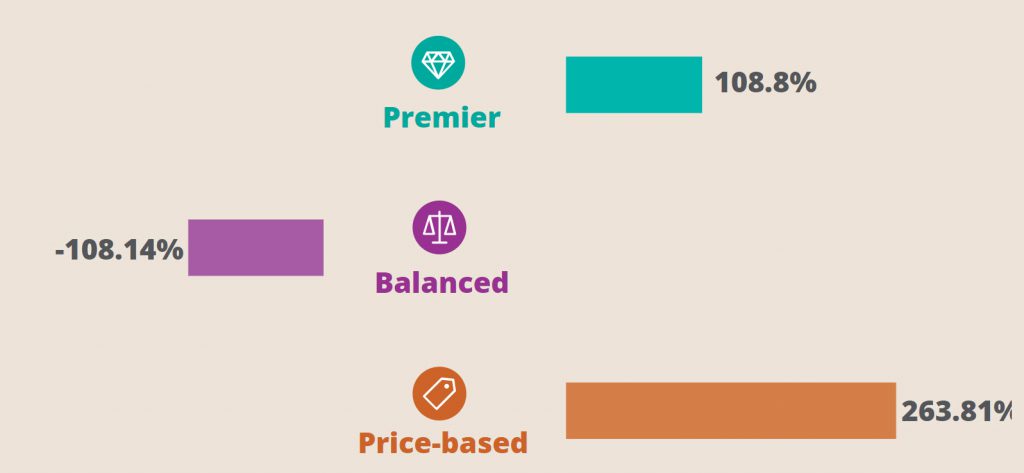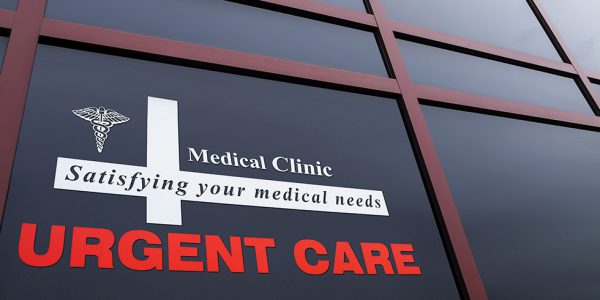President’s Message: In the midst of chaos, there is also opportunity
There is an old Chinese proverb that says, “In the midst of chaos, there is also opportunity.”
To some, today’s relentless pace of change can seem like chaos. At Stirling Properties, we embrace it as an opportunity to grow, diversify and evolve.
2018 was another such year of opportunity for our company as we continued to translate our talent, resources and skills into new and diverse projects, properties and challenges.
Take a look at just a snapshot from 2018.
So, what comes next? More chaos, more change and more opportunities—we at Stirling Properties are excited and ready!
– Marty Mayer
President’s Message: Chasing the Future
“Alexa, what does the future hold for the commercial real estate industry?”
It would be splendid if it was that easy to get answers to the countless questions that we all undoubtedly have regarding the real estate business. While we don’t (yet) have a crystal ball (or a Watson) to accurately predict the future, one thing is unquestionably certain: disruption is inevitable.
Our industry is on an accelerating disruption curve primarily driven by technology. Data access, artificial intelligence, and automation are quickly reinventing the entire premise on which we do business. And this fast-track is not slowing down any time soon.
In fact, it’s said that the real estate industry is the largest and ripest for disruption via technology and that we are actually lagging behind in innovation. During a recent conference, I heard a presentation from a group of young men heading up venture capital funds specifically focused on technology startup companies that would disrupt some aspect of the real estate world. They noted that more than $7 billion was invested in the last four years alone in such companies—and this is only the beginning.
As real estate is a long-term, capital-intensive, lease encumbered asset, it is critical to attempt to predict the future implications of this disruption. In my opinion, five significant influencers will disrupt the real estate industry.
#1 Data
Big Data drives the world. Everything we do, buy, see, browse for online, and every single place that we go is being captured and collected. This shared data enables machines to learn and predict human behavior, which leads to artificial intelligence, and eventually, to the Internet of Things. From our houses and offices to our bodies to the light poles in the parking lot, everything will be connected to the internet.
Data will literally impact every aspect of how we live, work, play, interact, and thus, affect every facet of real estate. As I said before, these things are reality NOW. We’ve already witnessed incredible technological advancements like geofencing and proximity marketing in retail, facial recognition features, and digital healthcare—all powered by data. It’s mind-blowing, and it will continue. From mobile platforms to smart buildings and virtual technology, access to data is going to change the face of commercial real estate.
#2 Jobs of the Future
Because of technology and automation, it’s estimated that ⅔ of all jobs will be at risk over the next 10-15 years. Entire industries will be eliminated or fundamentally changed, including many in real estate. For example, 38% of the retail workforce is vulnerable to elimination. Cashiers, fast food cooks, truck drivers, medical professionals—you name it—all face the probability of elimination.
Ultimately, real estate is driven by where people live and work. In my day, an employer’s location drove most of the decisions on where the workforce would live. The skilled workforce of the future—mostly made up of millennials—is very different. Skilled workers are now driven by quality of life, cost of living, culture, entertainment, the “coolness factor.” They place more importance on where they want to live and then find employment. We see examples of this in millennial magnet markets across the country. For companies to recruit and retain talent, they must follow the skilled workforce.
This workforce evolution is also impacting work and office environments. Those with open floorplans, collaborative spaces, green features, fitness options, and artisanal food choice are the types of working environments that this demographic is attracted to.
#3 Autonomous Vehicles
Experts predict cars will be basically obsolete by 2030—currently, there is a 95% inefficiency of use. It’s crazy to think that some of my grandchildren will probably never drive their own vehicle (thankfully).
Autonomous vehicles (AV) will be the biggest disruptor of real estate because this has long been an industry designed and built primarily around transportation, access, and parking. When you take those factors out of the equation, you are fundamentally changing the entire industry. The AV’s potential to reshape real estate, development, and city planning will rival that of the introduction of the automobile itself, and will destroy and create massive wealth in real estate assets.
Right now, there are 500 million parking spaces in the U.S. and 260 million vehicles. That’s almost a 2:1 ratio. (Houston is the winner at 30:1 ratio.) It’s projected that AV could reduce the need for parking space by more than 61 billion square feet.
“Alexa, what can I do with my empty parking lot?”
#4 Retail Renaissance
I would be remiss if I didn’t mention retail and the myth that brick and mortar is dying. It’s not dying; instead, it’s more like a renaissance. Yes, many stores have died and some will still die because they could not adapt to the disruption of e-commerce and shifting consumer demands.
However, many stores are thriving and seeing increased sales numbers. They are using e-commerce to their advantage and learning to adapt to online tools and technological platforms. Today’s consumers are digitally empowered, relentlessly distracted, and time constrained. Also, successful retailers are determining that the future of shopping is not just about shopping. It’s about dining, entertainment, experiences, leisure—with shopping as an adjunct. New retail uses are evolving every day. Those retailers that adapt to this changing landscape will come out on top.
I’ve heard a quote along the lines of, “Retail will change more in the next five years than it has in the past 50.” The retail renaissance is just beginning.
#5 Industrial is the new darling
Industrial real estate is one of the hottest real estate assets for two principal reasons. First, in retail, the last-mile phenomenon is driving an increased demand for industrial space to manufacture, sort, store and distribute goods in the race to get products to consumers in the fastest and most efficient manner possible. Statistics show that 90% of the U.S. is now within range for next-day delivery. Logistics and supply chain decisions are now a dominating factor influencing store locations, distribution facilities, and even mergers and acquisitions.
E-commerce is growing at over 16% per year. It’s projected that every $1 billion in e-commerce sales creates demand for another 1.25 million square feet of warehouse space in the U.S. You do the math—industrial real estate will continue to be a major influencer in our industry.
Another important factor driving industrial demand is the concept of “local is the new global.” Consumers are choosing local products and services over big-box models. We see the conversion of old, industrial spaces into innovative food halls, microbreweries, and cool office co-working spaces. In many cases, these conversions are transforming entire neighborhoods and communities. It’s exciting to see this asset evolution.
So there you have it—the top five influencers that I believe will have the most impact on the commercial real estate industry. While I do wish I could ask Alexa precisely what’s in store for us, we can be sure it involves more disruption.
One of my favorite quotes is, “You either see the future coming, or you chase it after it comes.” The moral of the story is that it’s critical we are thinking about the impacts of all of this and how it’s going to affect our business moving forward. Disruption should not be considered a threat, but rather an opportunity. I would be happy to hear your thoughts and open dialogue on these topics. Feel free to reply with your comments.
Now, “Alexa, where can I get a robot?”
President’s Message: Gross Exaggeration
I recently read another doom-and-gloom article in the local newspaper that embellished the dire health of shopping centers and the retail industry in general.
It reminded me of an old quote regarding Mark Twain, “The report of my death has been grossly exaggerated.” As the story is told, Twain was traveling abroad on a speaking tour. A rumor began that he was gravely ill, subsequently followed by reports that he actually died. A major news publication picked up on this rumor and ran with it—soon enough, the news went viral. Twain read about his own death in the media! Ironically, once the very-much-alive Twain was contacted by a reporter for a statement, he gave (a variation of) the famous line above.
His story is very reminiscent of the rumors and headlines regarding the death of retail and brick-and-mortar stores today—grossly exaggerated. This statement may sound contradictory in the wake of numerous high-profile store closures and bankruptcies over the last couple of years, but, according to a recent study by Deloitte, “The great retail bifurcation: Why the retail “apocalypse” is really a renaissance, here are some hardcore facts to add to the hysteria:
- In 2017, retail sales increased 3.5%, compared to a gross domestic product growth rate of 2.3% the same year.
- In the 1st quarter of 2018, retail spending was up 1.6% YOY; total spending across brick and mortar grew 3.2%.
- Last year, 44% of consumers reported spending more on retail than 2016. Only 14% said they spent less.
- Brick and mortar is predicted to grow by $36 billion by 2022, and e-commerce is predicted to grow by $50 billion in the same period.
Retail is not dying; it’s evolving. Deloitte’s report found that high-end, luxury retailers have seen revenues soar 81% over the last five years, while price-conscious retailers have seen their revenues steadily increase 37% over the same period. This contrasts with mid-level, balanced retailers (deliver value via a balance of price and/or promotion), whose revenue has increased only 2%. From 2015 to 2017, price-based retailers gained 2.5 stores for every store balanced retailers closed.
Net store openings and closings
Here’s why: The study shows that consumer economics are actually changing the retail environment, and household income has the strongest observed correlation with shopping behavior. Unfortunately, for the majority of U.S. consumers, the last 10 years have represented a dramatic worsening of their financial situations. Rising healthcare costs combined with new expenses associated with mobile phones and data plans are eating away at discretionary spending that would otherwise have benefitted retailers.
Additionally, income levels affect where consumers make purchases. Low-income consumers are 44% more likely than their wealthier counterparts to shop at discount retailers, and also more likely to shop in-store at supermarkets, convenience stores, and department stores. High-income consumers, on the other hand, are 52% more likely to shop online. While millennials are often lumped together and portrayed as the source of disruption, reporting found that millennial behavior (by income group) is virtually indistinguishable from other generations.
Likelihood of Online vs. In-store spend
The “e-pocalypse” can officially be filed away under fake news. While there is no question that technology has disrupted the retail business via e-commerce, mobile devices, virtual shopping, etc., physical stores continue to dominate retail sales. Research shows that 78% of consumers prefer to shop in-store and spend significantly more in physical stores than online.
In fact, the real story is that the vast majority of retail sales still take place in brick-and-mortar stores—e-commerce sales account for less than 10% of total retail sales. It is also estimated that over half of those online sales actually go to brick-and-mortar retailers. The online vs. brick-and-mortar struggle is not quite what it seems.
However, that doesn’t mean that all retail stores are going to survive. As I’ve said before, there will be winners and losers in the retail race. The winners will be those retailers that can evolve with the changing landscape and capitalize on the consumers increasing demands—and we will continue to see more store closures, especially among the mid-level, balanced retailers.
Home furnishings, beauty/cosmetics, and home improvement stores are performing exceptionally well. Stores such as Best Buy, Dollar General, Ross Dress For Less, TJX Cos. (T.J.Maxx, Marshalls, HomeGoods), ULTA Beauty, and countless others are all thriving and rapidly expanding their physical presence. We see new-to-market retailers pop up every day. Even Amazon has taken note of the power of physical stores and rolled out brick-and-mortar expansion plans. Many other pure online players have followed the same path, like Warby Parker, Fabletics, and Bonobos.
The folks at Deloitte concluded their insightful report with this: “A sea change is clearly taking place in the retail market—but it is not the retail apocalypse. In our view, it is instead a renaissance—driven by huge shifts in economics, competition, and consumer access to options, all fueled by exponential advancement in technology. And in this renaissance, the winners appear to be those retailers that can capitalize on consumers’ experiences of their economic well-being—or lack thereof—to offer a value proposition that aligns with consumer needs.”
Despite the deathly tales, retail is very much alive and well—as was Mark Twain!
President’s Message: A dog and a birthday celebration.
No, this is not the punchline for a corny joke. These two things have special significance in 2018. They are both symbolic of an exciting and momentous year to come for our company, our region, and our industry. Let me explain.
According to the Chinese Zodiac, 2018 is the Year of the Dog. The Chinese regard the dog as an auspicious animal, and even more encouraging is its characteristic word: Action! Being proactive is essential in keeping up with the change of today’s fast-paced landscape.
As for the birthday, the City of New Orleans is celebrating its Tricentennial Anniversary this year. In typical New Orleans style, there are many festivities planned throughout the year. (More to come.) However, the 300th Anniversary is more than just a party. It’s a celebration and reflection of the past, present, and future of New Orleans and our region as a whole. The Crescent City has quite a unique and colorful history and has undergone tremendous transformation to reestablish itself over the years. Recently, New Orleans has become one of the most remarkable comeback stories in our nation.
Stirling Properties is entering our 43rd year in business. (In dog years, that’s 301 years.) Much like the City of New Orleans, we too have transformed dramatically from where we started to where we are today. The speed of change—mostly resulting from technological advancements—is tremendously affecting not only our business but our entire lives. To me, the pace seems to be moving in dog years. It’s accelerating 7x over what we’ve witnessed in the past! We must learn to adapt to keep stride.
As evidence to our transformation and evolution as a company, last year, we celebrated many major achievements, including our expansion into the healthcare real estate sector, increasing our portfolio to more than 17.8 million square feet of property, and growing our footprint in the Gulf South region.
In 2017:
Stirling Properties acquired the shuttered Louisiana Heart Hospital in Lacombe, Louisiana, out of bankruptcy. We partnered with Ochsner, St. Tammany Parish Hospital, and Slidell Memorial Hospital to repurpose the 205,000-square-foot facility as a post-acute care hospital offering a variety of services including long-term acute care, skilled nursing, and inpatient & outpatient rehabilitation. Anticipated reopening date is in the 3rd quarter of 2018.
We are developing a new Ochsner medical facility at The Grove in Baton Rouge, Louisiana. The $105 million project includes a new 5-story, 206,510-square-foot medical office building and ambulatory surgery center. Stirling Properties is also overseeing a $15 million off-site infrastructure package as part of the project. The clinic will be located along the 1-10 Bluebonnet/Siegen corridor and is expected to open in early 2019.
Stirling Properties served as the landlord representative in the lease with DXC Technology for multiple floors of office space at the Freeport McMoRan Building in New Orleans, Louisiana. The company will initially occupy two floors of the building beginning in January, with future options to lease up to 10 floors representing a total of 178,000 square feet.
The Freeport McMoRan Building will be the permanent operations for DXC Technology’s new Digital Transformation Center in New Orleans, where the company will eventually employ 2,000 professionals. This is the largest economic development deal in the history of Louisiana, and #2 “Deal of the Year” nationally by Business Facilities magazine. The project has been in the works for more than 18 months and was heavily competed for, but New Orleans emerged as the front-runner beating out great cities across the country.
We completed the first phase of the Offices at River Chase in Covington, Louisiana. Located at the southwest corner of Brewster Road and Stirling Boulevard, Phase I includes a Class-A, two-story, 45,000-square-foot office building positioned on 3.5 acres. We also welcomed our first tenants to the space, including Duplantis Design Group and Liberty Mutual.
Just a few weeks ago, in a joint venture with Ochsner Clinic Foundation, we closed on the acquisition of a new rehabilitation hospital in Jefferson, Louisiana. The five-story, 129,875-square-foot medical building will house long-term acute care, inpatient rehabilitation, and a skilled nursing facility.
All of these ventures represent new milestones for Stirling Properties, which we were able to achieve because we altered our strategies and adapted to meet the demands of our industry. This allowed us to take advantage of innovative opportunities that presented themselves. We managed to translate our more than four decades of experience, combined with our talented team, to be successful.
In the same vein, the commercial real estate industry is currently undergoing a radical transformation. The bulk of this change can also be attributed to the fast-paced advancements in technology and digital platforms. Undoubtedly, as we move forward, technological innovation will continue to play a huge role in reshaping our business. Again, we must adapt to survive. As they say, old dogs need to learn new tricks!
2018 is going to be an exciting year. We’re eagerly anticipating the Tricentennial Celebration and the Year of Action (Dog). Stirling Properties is looking forward to new projects in the pipeline, and I’m confident that even more unforeseen prospects will arise that will require the same type of action and flexibility.
Happy New Year,
President’s Message: The intersection of retail and healthcare
It’s no secret that the retail real estate environment is evolving at lightning speed. E-commerce and technology are driving much of that transformation, as well as the shift in consumer shopping behaviors.
You’ve heard me talk of today’s ‘high-maintenance’ consumer. Their expectations have changed. They want convenience, they want choices, and they want it now. Those same consumer demands are also driving a shift in the outlook and strategies for the healthcare industry.
New healthcare laws have significantly increased the number of consumers seeking medical care. Combined with advances in technology, it’s created a type of healthcare marketplace, where consumers are now able to shop for providers and compare costs and services across multiple channels. Patients have morphed into customers.
In commercial real estate, there is substantial growth in the integration of healthcare in the retail setting, and on the flip side, retail is emerging in the medical space. Clinics providing same-day urgent care, primary care, specialty care, and wellness services have boomed over the last few years. More recently, we are seeing the healthcare services provided in retail environments expanding beyond your typical medical office buildings. Healthcare providers need many of the same components as retailers do, and having various locations increases the entry portals into their respective healthcare networks.
Very similar to the last mile in retail, the entire healthcare delivery system is changing. It’s all about getting the product to the consumer in the shortest amount of time possible. That means connecting with them closer to where they live, in their own neighborhoods and communities. Speed, convenience, and cost efficiency are at the core of this integration.
Retail environments offer high visibility with easy access and ample parking. Customers want a one-stop shop for all of their daily needs. They want to get their groceries, buy new shoes, and visit a physician all in convenient locations.
Another attractive quality for the retail location is surrounding amenities such as restaurants and entertainment options. Patients can eat lunch, go to a movie theatre, or shop in between medical appointments or while waiting on test results. Surrounding hotels provide convenience for extended medical care needs of visiting patients and their families.
Cost efficiency is also a major factor in shifting healthcare services away from traditional hospitals and acute care settings. Smaller facilities are easier to maintain and cost less to operate. Segregating various outpatient medical services into specialized clinics can also provide customers with higher-quality, focused care—while freeing up more expensive hospital beds for extensive inpatient care.
Technological advancements—e-commerce (or should I say e-healthcare?)—are disrupting healthcare in much the same way as retail. We are seeing the rise of innovative digital medical services such as virtual doctor visits, robotics, and simulated wellness plans. Customers are now researching doctors and reading online reviews. They are price shopping providers and services. They want to order prescriptions and supplies and schedule medical appointments right from their mobile devices.

Ochsner Medical Complex River Parishes in LaPlace, LA
At Stirling Properties, we are adapting to this changing environment. As the demand for new healthcare services increases, so are our service lines to meet those local needs. As part of our company’s strategic growth plan, we are expanding into new real estate sectors where we have a translatable skillset that can add value—specifically one of those is healthcare—and diversifying our commercial portfolio.
“The types of uses coming out of the major regional hospitals is expanding beyond what we have seen in the past. Emergency departments and imaging services, maternity and phlebotomy, long-term and short-term acute care, outpatient acute care surgery, and behavioral health facilities are all emerging outside of the typical hospital setting,” said Townsend Underhill, Senior Vice President of Development for Stirling Properties.
“With this shift from inpatient to more outpatient services, there is a demand for new development to meet healthcare facility designs and product offerings, like the micro-hospital concept—a hybrid of urgent care centers and traditional hospitals. They provide more specialized services with specialized doctors in a more convenient footprint.”
Late last year, Stirling Properties announced the development of a new mixed-use medical facility in LaPlace, Louisiana. Phase I of this development included a lease to Ochsner Medical Complex-River Parishes for a roughly 20,000-square-foot freestanding Emergency Room & Imaging Services clinic. The micro-hospital concept opened to the public last week. The adjoining property is available for additional commercial development.
Earlier this year, we announced the acquisition and redevelopment of the shuttered Louisiana Heart Hospital property in Lacombe, Louisiana, and the subsequent lease to Ochsner. With its local partners, St. Tammany Parish Hospital and Slidell Memorial Hospital, the company plans to redevelop and repurpose the building to open a Post-Acute Care Hospital including long-term acute care, skilled nursing, and inpatient rehabilitation services in one central location.
We’ve also recently announced the development of a new medical facility at The Grove in Baton Rouge, Louisiana, planned near the Mall of Louisiana fronting Interstate 10. The project includes a five-story medical office building and an ambulatory surgery center amongst other uses that in total equals 260,000 square feet. Anticipated completion is scheduled for early 2019.

Dentists of Slidell at Fremaux Town Center
In addition to these development and acquisition opportunities, our brokerage and asset management teams are also adapting to the emergence of healthcare in the retail environment. Many of our agents are already leasing local retail space for medical office uses such as dental clinics, physical therapy, eye clinics, and dermatologists. These healthcare providers in some cases are even helping to fill vacant space left by shuttered retailers. Because of this increased diversity of tenants and needs, more and more property owners are outsourcing their asset and property management services to companies that can effectively maintain and operate them.
Stirling Properties handles the management and leasing of Lakeview Medical Office Building, a 5-story, 75,000-square-foot, class-A office building located in Mandeville, Louisiana. The office is attached to Lakeview Regional Medical Center, one of St. Tammany Parish’s major hospitals, providing an opportunity to bring in various medical tenants that cater to and support the healthcare industry and its patients—a built-in customer base.
As the delivery method of healthcare continues to evolve, so should commercial real estate companies. Those of us in real estate can (and should) use the valuable lessons that we have learned through retail to help us adapt and respond to the needs of medical service providers. When retail and healthcare intersect, many opportunities emerge.
Marty
President’s Message: The Death Knell of Retail Real Estate Is Exaggerated
I am sure you have all read attention-grabbing news headlines such as these and share the same concerns regarding the future of retail real estate. In this new era of constant access to millions of digital media streams, dramatic headlines cut through the clutter and generate more attention. Drama sells. But despite all the negativity circulating, I am confident that the retail landscape is solid, and the death knell of brick-and-mortar stores is heavily exaggerated.
While there is no question that technology has disrupted the retail business via e-commerce, mobile devices, virtual shopping, etc., physical stores continue to dominate retail sales. Research shows that 78% of consumers prefer to shop in store and spend significantly more per month in a physical store than online. E-commerce, multiple fulfillment options, omnichannel retailing, and other technological advances are improving the brick-and-mortar shopping experience and boosting sales at physical stores.
Even though e-commerce sales are growing significantly (approximately 15% annually), the in-store vs. online struggle is not quite the battle that it is portrayed to be. E-commerce sales—combined with mail-order sales—account for less than 10% of total retail sales. Furthermore, it is estimated that over half of online sales actually go to brick-and-mortar retailers. Consumers are still buying from stores, but now they have more choices to compare prices, make transactions, and receive their goods. Major retailers such as Anthropologie and Nordstrom are effectively leveraging e-commerce sales to grow their business. Anthropologie notes that 36% of its total revenue is earned online and Nordstrom reports 22%. Successful retailers are learning to integrate online sales and omnichannel retailing.
However, in every industry, there will always be winners and losers. Companies must adapt to an evolving business climate. That includes retailers. Competition and shifting customer habits are hurting more merchants than the internet, and innovative new retail concepts are coming to market daily. Unfortunately, corporations like Blockbuster, Sports Authority, and The Limited did not survive the ever-changing retail industry. But on the flipside, stores such as Best Buy, Dollar General, Ross Dress For Less, TJX Cos. (T.J.Maxx, Marshalls, HomeGoods), ULTA Beauty, and countless others—most of which are in Stirling Properties’ portfolio—are all flourishing and rapidly expanding their physical presence. New-to-market retailers like Filson, Iron & Resin, KENZO, and Woolrich are getting in on the action. Even online retail-giant, Amazon, has taken note of the power of physical stores and rolled out brick-and-mortar expansion plans. Many other merchants with digital roots have followed the same path (i.e. “clicks-to-bricks”), such as Warby Parker, Fabletics, and Bonobos.
Similarly, there will be winners and losers as retail real estate investors and owners. Well located, solidly anchored centers are thriving, while Class-B and -C malls and poorly located centers are continually losing national tenants, struggling to fill empty spaces, and downsizing significantly. Some are failing altogether.
The bottom line is that consumer patterns and expectations have shifted. In this so-called “era of the high-maintenance consumer,” they demand value, convenience, multi-channel fulfillment options, and a unique, entertaining experience.
Well-located retail real estate with strong anchors is still a profitable investment option. Net absorption has been high, demand has been exceeding supply, and rents have been rising. Retail is yielding the best 20-year return of any property type due to a combination of strong fundamentals, favorable demographics, limited new supply, and cash flow growth potential. Secondary and tertiary markets are proving to be especially attractive for investors to buy value-add retail opportunities.
Retail real estate is not dying; it’s disrupted. Anyone with any involvement in the industry must embrace this changing landscape to be successful. We will continue to hear negative news and over-exaggerated headlines as the retail race endures, and more stores announce weak sales forecasts and closures. But disruption creates opportunity and a chance for reinvention. At Stirling Properties, we plan to take advantage of these opportunities to re-evaluate and enhance our portfolio and strategic growth plans.
We must ALL adapt and deliver…or get left behind!
-Marty










